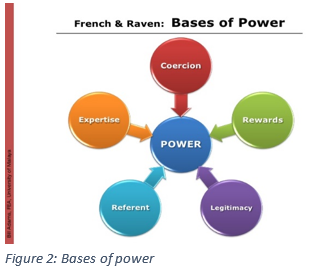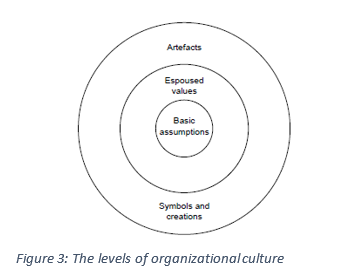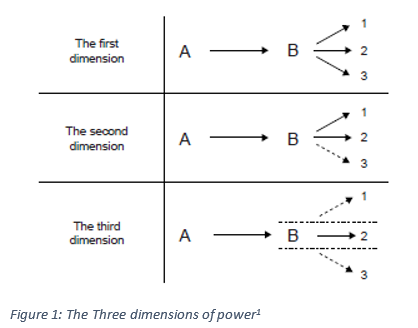Project culture & power
Developed by Nikolaj Justsen
Contents |
Abstract
In this article two various aspects of the chapter “infusing in the project mission” will be touched and explained. The idea behind the article is to convey the two various aspects and how they have an influence on each other. The first aspect is project culture within a construction site which deals with the diverse cultures within an organization and how the leader must respond to these diverse cultures. The second aspect in this article is the levers of power that the leader can use to communicate their missions and goals for the organization or employees, furthermore how a leader with diverse types of power can communicate the same thing in separate ways. The reason why these two aspects are chosen is this article is the way that they lean op against each other. When there are diverse cultures in an organization it is very essential for the leader or leaders to have the necessary power in their way to communicate and understand the diverse cultures there will be in the organization as well as in their will be in a construction site.
Big Idea
In this chapter, the focus will be on the big idea behind the chosen topics in the article and a description of the theory and concept behind.
The levers of power
In an organization, the levers of power and the way to influence are unavoidable, the power in the communication are essential for the delivery of the project goals, “power is essentially the ability of A to persuade B to do what A wants” . As shown in Figure 11 there are three dimensions of power in an organization.
• The first dimension is “the overt power of A to directly influence B to choose one option rather than another”1 This kind of power can be used If A has a certain level of trust in B. A can here influence B’s choice is his communication, but B can still make his own decision.
• The second dimension is “the power of A to set the agenda so that B’s preferred option is not ‘on the table’” In the second dimension A has power to set agenda for B. But in the end B can still decide on his own. Again, this will request that A has some kind of trust in B
• The third dimension is “the hegemonic power of A to set the rules of the game so that B cannot conceive of options other than the set acceptable to A” In the third dimension A has total power on B’s decision, this way of communication is certain used when the trust between A and B are very low and therefore A dos not give B a opportunity to make his own decisions.
Bases of power
Through the three dimensions of power, communication can be manifested in many ways in an organization. This leads to the theory called the five bases of power, there was identified by French and Raven in 1960. The theory talks about how a leader can communicate by using various kinds of power in his way to deliver a message. As shown in Figure 2 bases of power can be defined by 5 levels.

• Coercive power Is the ability for a leader through physical power to force an employee to complete a task, with verbal threats. These often results with a short-term observance, but typically on long-term this often creates unpleasant work environment. This will often lead to a bad satisfaction for the employees with their job, and therefore leads to a decreasing commitment. “Equally important as an effect on the receding popularity of coercion as a basis of power has been the influence of quality management theorists, such as Philip Crosby and W. Edwards Deming. They suggested that there is a decline in productivity and creativity when coercive power is employed. The use of coercive power results in an atmosphere of insecurity or fear” .
• Legitimate power Is highly reliable in the trust and belief between the employees, that the leader is in his right to give orders only based on the leader’s position in the organization. So, in a construction site or in a general project the employees comply only based on the legitimate power. If a leader only communicates through legitimate power there are a chance that the employees over time not will fell a sense of appreciation and commitment.
• Reward power is the ability for the leader to give reward for a certain kind of task. Especially in the construction business this is a very common power to use for the leaders. If a certain task is complete on time the employee will get a reward. when this power is used in a reasonable way, this will often lead to an increased motivation among the employees. But if reward power is used to often the system has the chance to backfire. This means employees will get lacey if they don’t get a reward, and the work environment can be ruined.
• Referent power comes from a very strong respect from employees to their leader, and their own desire to either identify with or emulate him. Therefore, are referent power highly reliable on trust and the manager leads by example. The theory about referent power will often take considerable time to develop because it depends on trust theirs has been build trough time. In a workforce with fast turnover this power is not applicable.
• Expert power comes from the employee’s belief that the leader has a higher level of knowledge or more specialized skills. Here leaders may be assumed authority based on their higher level of knowledge. On the other hand, expert power can in sometimes diminish the leader because of his/hers sharing of knowledge. “The result is either that the manager's authority diminishes or that the manager intentionally chooses not to share his or her knowledge base or skill set with the employees. The former choice weakens the manager's authority over time, while the latter weakens the organization's effectiveness over time” 2.
Project culture
When working on a project in an organization it is essential that the leaders has attention on the diverse cultures within the project. Diverse cultures refer to aspects like; beliefs, values and attitudes. In an organization, the culture sets how your coworkers see you, how they will try to interact with you etc. when we are talking about culture some aspects are easier to observe and some can be a little bit more difficult to read. As shown in Figure 3 organizational cultures can be defined by three levels.

• Artefacts “these are the visible symbols of organisational culture, such as the way people dress, the amount of marble in the head office foyer and the layout of the offices”4 For the leader, this aspect is easy to show to external partners, how the culture is within the organisation. This aspect is highly important as it gives the client a first impression of the organization.
• Values “these are the espoused values in terms of what people say and how they justify decisions – the vocabularies of motive that people deploy in managerial debates” 4 These are the organisational values there are set from the beginning. How employees are talking to external clients, furthermore what values the company have and how to present this.
• Basic assumptions “these are largely the product of socialisation and education, and may not be explicit, even to the individual who holds them. These are the taken- for- granted values- in- use which actually drive decision making; these are not necessarily completely congruent with the espoused values” 4
Application
As we now know the idea and theory behind the topics, this chapter will go through how to use an implement these theory’s in an organization. Another important aspect on these topics are when the different theories are applicable.
Infusing project culture
As we now know there are various levels for defining project culture. The problem for the leaders in a construction site are that the clients often have their own culture. Therefore, the project leader must try to create a distinctive culture. To create and organizational project culture there 5 steps there can be used for the project leader as a guide Creating an organizational project culture:
• Understand what makes up the employee’s ideal cultures in an organization
• Measure where the employees “are” today with the “ideal” project culture
• Decide goals and strategy
• Develop and implement
• Evaluated
To create this ideal project culture different initiative can be used. Michael Stanleigh talks about the PCI (Project culture initiative) 5. it is a four-step initiative that helps creating an ideal project culture.
Step 1: create a steering committee This first step is about creating a committee that contains a mix of multicultural managers to lead and guide the approach for the project. It is here very important for the committee to define their roles and purpose, and furthermore how their communication strategy will be. In bigger projects, it can be necessary to create a subcommittee to help the project as it changes.
Step 2: Communicate the PCI to the organization After the committee has taken their first steps, the next step will be to communicate the taken initiatives for the rest of the project organization. this includes why it is important at how this will benefit the organization.
Step 3: Measure the current culture with the ideal Next step in the process is to measure the current situation with the ideal. This can be done by implementing surveys, where the employees can be asked questions about the present situation, this gives the committee the foundation to measure with the ideal that has be discussed in step 1.
Step 4: Develop strategies to close gap between current and ideal The last step is to develop and implement the new strategies based on the surveys.
As a little wrap up of the outcomes for the above-mentioned the benefit of PCI can be: - Help project managers to identify and create a work environment that is pleasant, consider different organizational cultures.
- To meet the changes through the project and facilitate the ideal project culture.
- To make a plan that will make sure the project leader achieves the strategy for the organizational project culture.
Reflection
In the following chapter, there will be critically reflected on the theories. To be able to proper reflect on the theories there will be used other relevant literature to back up claims made through the article. When we talk about power and the diverse types there can be used, it is very essential to know which bases of power that are most effective and in which connection they are relevant. From the article, there have been given the main theory’s but there are no simple answers especially when there are diverse cultures in the organization. It is up to the leader to determine what he/her thinks are effective in the situation, but also take in consideration what this can lead to in the long-run. As a reflection upon the article, I think that reward power can lead to more satisfaction but ultimately will end up increase influence in the long run, despite that this is known for having bad effect In the long run or if it is used to much. Furthermore, they found that coercive power is much more effective when we talk about influencing an employee who are about to ruin the overall success of the organization, even though that in the short run it leads to bitterness. When choosing a power strategy there in the end leads to acceptance and more long-termed can be highly difficult to implement, because it requires a lot of time and much effort from the leader if there is information about very technical information. But at the end we are only humans, and for the leader to be able to communicate the right levers of power it is essential that the leader know which person he communicates with. Because every employee is different, and as persons we receive communication in different ways.
Annotated bibliography
Articles:
• David A. Victor “Leadership styles and bases of power” This article gives an idea and theory behind the leadership styles and bases of power
• Michael Stanleigh “How to Establish an Organizational Culture that Supports Projects” Is an guide to create an organizational culture within a project.
• Bertram H. Raven “The bases of power and the power/interaction model of interpersonal influence” (2008) This article gives a critical view on power bases and their effectiveness.
